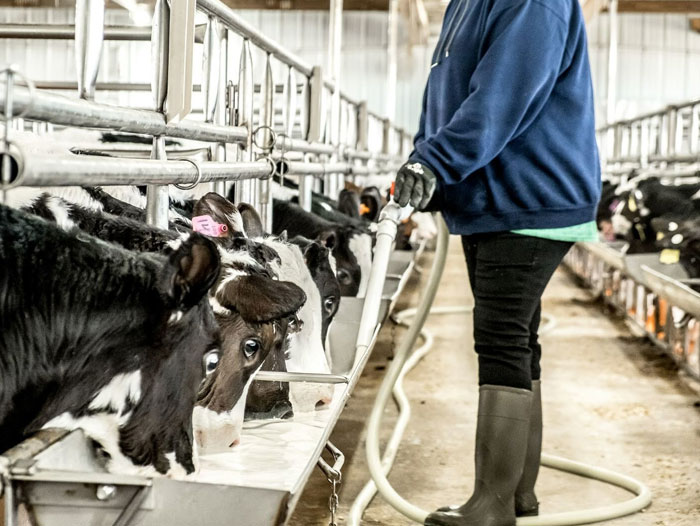Veal.org Answers Most Asked Questions About the Veal Industry
July 10, 2023 | 3 min to read

ROME, N.Y. — Do you have more questions about how veal calves are raised? Great! Let’s get started with a few commonly asked questions.
What is veal?
Veal is meat from dairy beef animals harvested at about 500 pounds. Dairy cows give birth once a year to continue producing milk. While female calves grow up to serve as cows in the milking herd, male (bull) calves often become beef or veal. Milk-fed veal calves are raised for 6 months and weigh about 500 pounds at harvest.
How old and how big are veal calves when they are marketed?
Veal calves are raised for about 6 months and are harvested at about 500 pounds. They are bigger than a pig and older than a turkey at the time of harvest.
What do veal calves eat?
Veal calves receive milk formula, water, and grain daily.
Are veal calves anemic?
No, veal calves receive iron and other nutrients in the milk and feed they are given daily. A nutritionist analyzes their feed to ensure it provides all the nutrients calves need to be healthy and grow.
How are veal calves raised?
Veal calves start out in individual pens for health reasons but are moved to group housing at 6-8 weeks of age. Calves have space to stand up, lie down, turn around, groom themselves and socialize with other calves.
Is veal meat inspected to ensure safety?
Once calves leave the farm, they are inspected by federal and state agencies throughout each step of the production process. All state and federal meat inspection is overseen by the United States Department of Agriculture’s (USDA) Food Safety Inspection Service (FSIS), which regulates food safety standards for raw meat. FSIS inspectors work within meat processing and packing plants to ensure compliance.
To learn more about the veal industry or to find recipes, visit veal.org, funded by beef farmers and ranchers.
About The Beef Checkoff:
The Beef Checkoff was established as part of the 1985 Farm Bill. The checkoff assesses $1 per head on the sale of live domestic and imported cattle, in addition to a comparable assessment on imported beef and beef products. States may retain up to 50 cents on the dollar and forward the other 50 cents per head to the Cattlemen’s Beef Promotion and Research Board, which administers the national checkoff program, subject to USDA approval.
